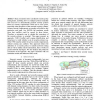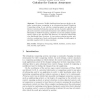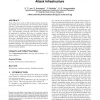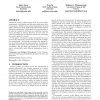146
Voted
EGCDMAS
2004
15 years 1 months ago
2004
Security policies are abstract descriptions of how a system should behave to be secure. They typically express what is obligatory, permitted, or forbidden in the system. When the s...
94
Voted
IM
2007
15 years 2 months ago
2007
- Many researchers have considered security policy management, including how to configure policies manually and even how to automatically generate security policies based on securi...
104
Voted
ICWS
2010
IEEE
15 years 2 months ago
2010
IEEE
Service-oriented Architectures support the provision, discovery, and usage of services in different application contexts. The Web Service specifications provide a technical founda...
CRISIS
2008
15 years 2 months ago
2008
To address the evolution of security incidents in current communication networks it is important to react quickly and efficiently to an attack. The RED (Reaction after Detection) ...
122
Voted
CCS
2008
ACM
15 years 2 months ago
2008
ACM
The specifications of an application's security configuration are crucial for understanding its security policies, which can be very helpful in security-related contexts such...
115
Voted
BIRTHDAY
2008
Springer
15 years 2 months ago
2008
Springer
Abstract. We present a Mobile-Ambients-based process calculus to describe context-aware computing in an infrastructure-based Ubiquitous Computing setting. In our calculus, computin...
110
Voted
ESORICS
2000
Springer
15 years 4 months ago
2000
Springer
Several authors have proposed using code modification as a technique for enforcing security policies such as resource limits, access controls, and network information flows. Howeve...
98
Voted
CCS
2006
ACM
15 years 4 months ago
2006
ACM
Most of the recent work on Web security focuses on preventing attacks that directly harm the browser's host machine and user. In this paper we attempt to quantify the threat ...
115
click to vote
CCS
2006
ACM
15 years 4 months ago
2006
ACM
Traditional security policies largely focus on access control requirements, which specify who can access what under what circumstances. Besides access control requirements, the av...
104
Voted
CSFW
2004
IEEE
15 years 4 months ago
2004
IEEE
In many systems, items of information have owners associated with them. An owner of an item of information may want the system to enforce a policy that restricts use of that infor...





